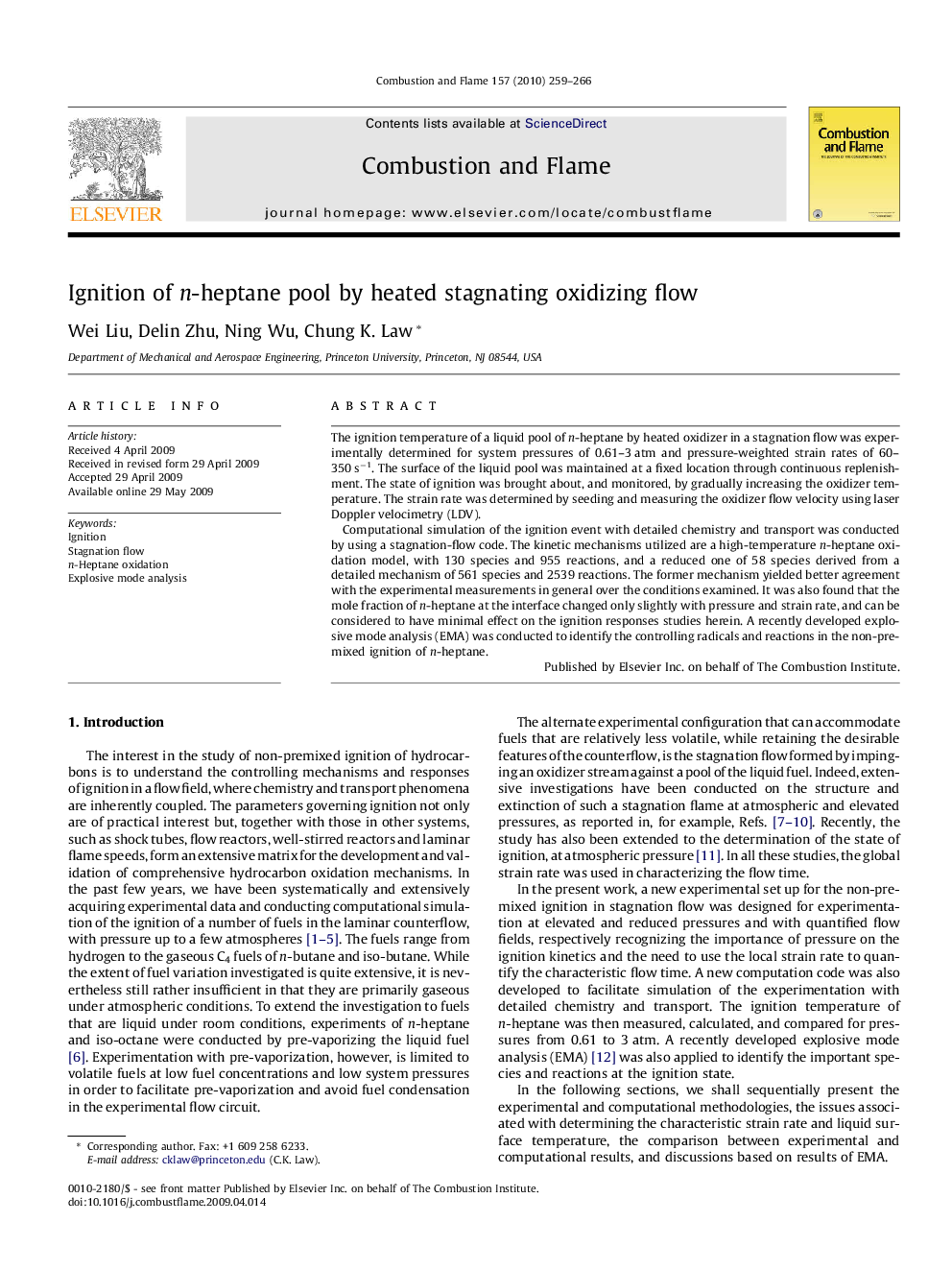| Article ID | Journal | Published Year | Pages | File Type |
|---|---|---|---|---|
| 169733 | Combustion and Flame | 2010 | 8 Pages |
The ignition temperature of a liquid pool of n-heptane by heated oxidizer in a stagnation flow was experimentally determined for system pressures of 0.61–3 atm and pressure-weighted strain rates of 60–350 s−1. The surface of the liquid pool was maintained at a fixed location through continuous replenishment. The state of ignition was brought about, and monitored, by gradually increasing the oxidizer temperature. The strain rate was determined by seeding and measuring the oxidizer flow velocity using laser Doppler velocimetry (LDV).Computational simulation of the ignition event with detailed chemistry and transport was conducted by using a stagnation-flow code. The kinetic mechanisms utilized are a high-temperature n-heptane oxidation model, with 130 species and 955 reactions, and a reduced one of 58 species derived from a detailed mechanism of 561 species and 2539 reactions. The former mechanism yielded better agreement with the experimental measurements in general over the conditions examined. It was also found that the mole fraction of n-heptane at the interface changed only slightly with pressure and strain rate, and can be considered to have minimal effect on the ignition responses studies herein. A recently developed explosive mode analysis (EMA) was conducted to identify the controlling radicals and reactions in the non-premixed ignition of n-heptane.
